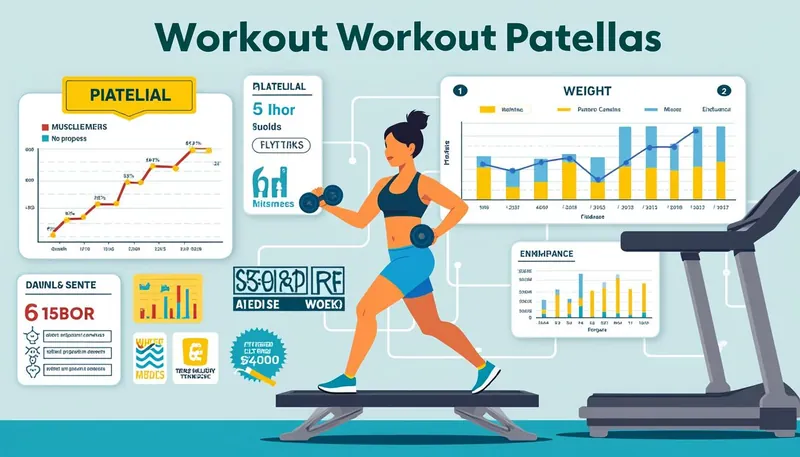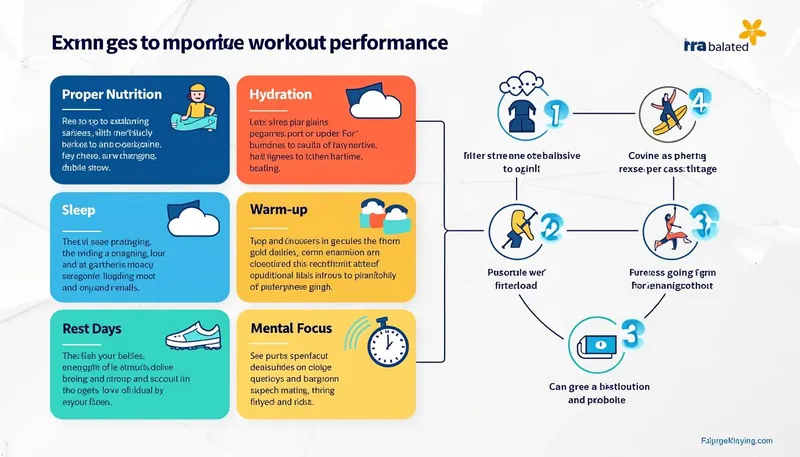Hitting a gym plateau can feel like running into a brick wall; your energy is there, your commitment is strong, yet your progress seems stuck. Many enthusiasts go through periods of frustration where gains in strength, muscle size, or fat loss seem to hit a ceiling despite unwavering dedication to their training regimen. This phenomenon, known as a workout plateau, is common among fitness aficionados of all levels. Understanding why these plateaus occur and how to combat them is crucial to maintaining not just your physical gains but also your morale in the gym.
Factors contributing to stalled progress range from your training techniques to aspects of nutrition and recovery. If you’re following the same workout plan day after day, ignoring proper rest, or failing to adjust your diet, your body may hit a wall. Unraveling the mysteries behind workout plateaus requires a good mix of patience, science, and instinct. In 2025, many fitness enthusiasts are armed with high-tech gadgets like Fitbit or nutrition tracking apps like MyFitnessPal to monitor their progress, yet they still might find themselves in a stagnant phase.
Staying informed and adaptable is the key to breaking through these frustrating phases. So how can you jumpstart your fitness journey once more? Let’s explore the crucial aspects of understanding and overcoming your gym plateaus.
Understanding Workout Plateaus: The Basics
So, what exactly is a workout plateau? In simple terms, a plateau occurs when you no longer see improvements in performance or physique despite consistent effort. This stall can impact numerous facets of fitness, whether it’s gaining muscle, losing fat, or improving endurance. The human body is remarkably adaptable, which often leads to these plateaus as it adjusts to the demands placed on it.
Plateaus can spring from several sources:
- Lack of Progressive Overload: If the weight, reps, or workout volume remains unchanged, your body has less reason to adapt.
- Repetitive Programming: Doing the same workouts can lead to efficiency—great for performance, but poor for progress.
- Inadequate Recovery: Recovery is crucial. Without proper rest and nutrition, your body cannot repair the stress inflicted during workouts.
- Nutritional Imbalance: Mistakes in caloric intake, whether too few or too many, can adversely affect your gains.
- Chronic Stress and Hormonal Imbalance: Stress and hormonal changes may affect energy levels and overall health, hampering gains.
Recognizing the Signs
The signs of hitting a plateau vary but generally can include:
- No increases in strength despite consistent lifting
- No visible changes in body composition
- Feeling fatigued or irritable during workouts
- Stagnation in cardio performance
While experiencing a plateau can be disheartening, it’s far from unusual. Even the most seasoned lifters encounter these roadblocks. The key lies in recognizing the stagnation and strategizing on how to overcome it.

Common Causes of Stalled Progress: What You Need to Know
By now, you’ve got a decent grasp on what a plateau is, but unlocking the reasons behind it is essential to moving past it. Let’s dive deep into the common causes that might be hindering your fitness journey.
1. Lack of Progressive Overload
Progressive overload is a fundamental principle of strength training. It refers to the practice of gradually increasing the amounts of stress placed on the body during exercise. If you’re routinely lifting the same weights, your body will adapt quickly to those demands, resulting in stagnation. Here are some methods to apply progressive overload:
- Increase the weight you lift
- Add more sets or repetitions
- Shorten rest times between sets
- Change the tempo of your workouts
2. Repetitive Programming
Much like following a strict diet, repeating the same workouts can lead to diminishing returns. Mix things up by introducing varied lifts and exploring different splits for your training routines. Utilize different modalities like free weights versus machines to engage varied muscle fibers.
Consider this example: if you’ve been concentrating on the bench press exclusively, it’s time to introduce exercises such as incline bench presses or dumbbell presses to stimulate your chest differently.
3. Inadequate Recovery
Your body requires time to recover and grow stronger. Unfortunately, many overlook the importance of rest days and adequate sleep. Here are tips to ensure you recover effectively:
- Prioritize 7-9 hours of quality sleep a night
- Consider active recovery sessions
- Incorporate deload weeks
Imagine a high-performing athlete who skips their rest days; chances are, they’ll find their performance diminishing as fatigue sets in.
Reassessing Nutrition and Diet: Fueling Your Gains
Nutrition plays a pivotal role in your fitness adventure. If you’re not fueling your body with the right nutrients, you might end up stalling your progress. In 2025, companies like Optimum Nutrition and MuscleTech are leading the charge for supplementing diets, but real food still reigns supreme.
A crucial aspect of nutrition is tracking your macros, a strategy that apps like MyFitnessPal make accessible. Understanding your protein, carbohydrate, and fat intake ensures you’re fueling your workouts and recovery. Here are essential dietary tips:
- Maintain a slight caloric surplus if the primary goal is muscle gain.
- Ensure adequate protein intake; aim for 0.8-1g per pound of body weight.
- Focus on whole foods over processed options for better nutritional benefits.
Why Your Diet Matters
What you consume significantly affects your gym output. For instance, a study has shown that adequately fueling your body can be the differentiating factor between stagnation and improvement. When lifting weights, it’s essential not only to consume enough but to prioritize nutrient-dense foods that support recovery.
| Food Item | Macro Breakdown (per serving) | Notes |
|---|---|---|
| Chicken Breast | 30g protein, 2g fat | Excellent source of lean protein |
| Brown Rice | 5g protein, 1g fat, 45g carbs | Provides complex carbs for energy |
| Broccoli | 3g protein, negligible fat, 6g carbs | High in fiber and small calories |
Strategies to Break Through Your Plateau: Action Steps
Feeling stuck? Don’t fret! There are numerous strategies you can implement to shake up your routine and bypass that plateau.
1. Implement Progressive Overload
As mentioned earlier, you need to make sure you’re consistently increasing the work. Start small; even increasing your weights by 5% can make a difference!
2. Change Your Workout Routine
Try incorporating new exercises or modifying your training splits. Varied workouts stimulate different muscle fibers and prevent adaptation.
3. Prioritize Recovery
Make rest a non-negotiable part of your regimen. For optimized performance, aim for plenty of sleep and relaxation.
4. Experiment with Nutrition
This includes tracking macros or diversifying your food choices to enhance nutrient density and recovery.
5. Circuit Training and High-Intensity Workouts
Incorporating circuit training or HIIT (High-Intensity Interval Training) can stir up your metabolism and keep your body guessing.
Real-Life Examples
Consider Sarah, who had been bench pressing the same weight for a month. Her trainer introduced pause bench press drills, which forced her to exert more effort to lift the same weight, leading her to break through her plateau within weeks.

What is a workout plateau?
A workout plateau is a stage where improvements in strength, physique, or fitness seem to stall despite consistent effort. This can be due to several factors like lack of progressive overload, inadequate recovery, or nutritional issues.
How long can a plateau last?
Plateaus can last anywhere from a few weeks to several months depending on how quickly you adapt your training and lifestyle. Continuous monitoring and strategic changes are essential for overcoming them.
Do I need to change my entire routine to overcome a plateau?
Not necessarily! Small adjustments, such as varying exercise techniques or increasing weights, can often break the plateau. However, sometimes a complete overhaul may be helpful.
Is it normal to feel tired during a plateau?
Yes! Feeling fatigued or demotivated is common during plateaus. This can be a sign that your body needs adequate rest and recovery.
Should I track my progress?
Absolutely! Tracking your workouts helps identify patterns and changes, enabling you to see what works and what doesn’t. Tools like Bodybuilding.com, Nike, or Adidas apps can aid in this process.

